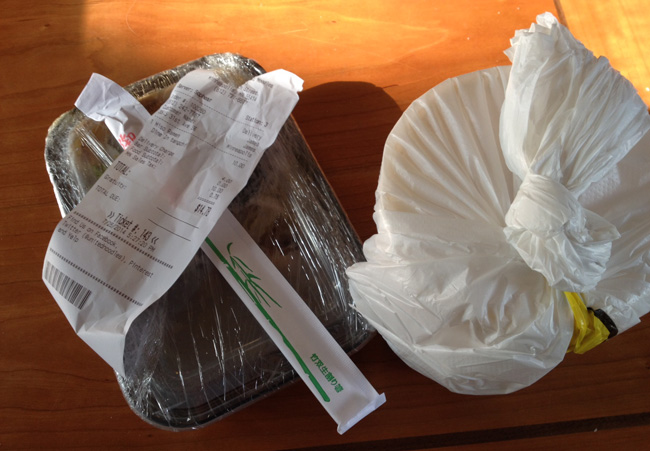
From Monday through Friday, there is no real place on the Heavy Table for autobiography. That said, it’s Saturday and I am suffering from a summer cold that may end my life. So this review of the bike-delivered Miso Ramen from the United Noodles UniDeli may wander a bit.
I think by now we’re all tired of hearing about Proust’s madeleine. But there’s a great deal going on with that metaphor, the cookie that conjures up a rich sensory world of both formalized and half-processed memories, using molecules of flavor to create something like an edible time machine.
For me, the totality of United Noodles is that madeleine. The first pan-Asian grocery store that I ever visited (in Chicago, Illinois) was physically and metaphorically my gateway from a childhood of brats, pizza, and luncheon meat to the realization that there’s a wide, wild, complicated, and wonderful world of food out there.
So when I take my son down the aisles of United Noodles, I’m also walking with my 17-year-old self, goggling at the squishy cubes floating in brightly colored liquids, the mysterious pastes, and the chips flavored like shrimp or seaweed or vegetables that I’ve heard of but likely never really tasted fresh.
And when its ramen shows up at my doorstep, it’s a chance to reflect on how and why we eat the food that we do, and how we put together the language we use to explain it.
I. YAOHAN MALL
I have been asked how I got into writing about food, and the answer is I got into journalism, and then shortly thereafter I got into food, and then after years of pursuing them on completely parallel tracks, I finally crossed them over and created a hybrid.
I caught the food bug in high school when we took a Japanese class trip from Madison, Wisconsin, to the pan-Asian (largely Japanese) Yaohan Mall in Chicago. My friend Kathy and I made sushi for class once, but we made it the night before and refrigerated it. Suffice it to say that it didn’t really do the art form any justice. “Gummy” is probably the kindest word that we can use to describe that situation.
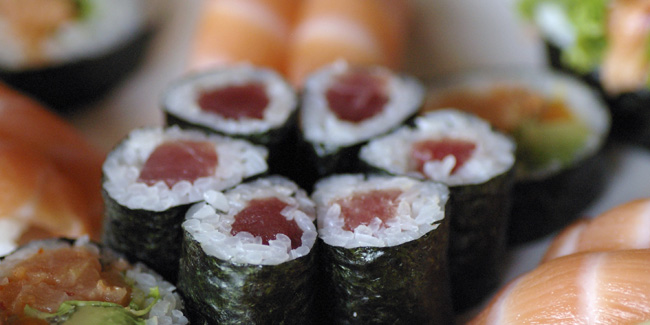
But other than that well-intentioned atrocity, I’d never had sushi before. Had heard of it. Was intrigued by it. Had no concept of what to expect. So when we got to Yaohan, at the top of my list was getting to the food court and buying sushi. It came in a little plastic clamshell package with the squirt-it-from-the-packet soy sauce and the squirt-it-from-the-packet wasabi and a bit of slightly chewy pickled ginger in the corner.
For maximum exoticism, I made sure to try maki containing raw fish, so that when I had my first sushi I was tasting raw tuna, vinegared rice, seaweed, and wasabi. These were four things I had never tasted before, tasted in concert. This was not merely a new flavor, or a new combination of flavors, it was the entryway to an entirely different spectrum of flavor, akin to hearing rock-n-roll for the first time after a childhood of nothing but classical music.
At the time, I was nonplussed. It wasn’t a matter of disliking the stuff; I finished it, and then sort of put it out of my mind. But after returning to Madison, the flavors — all of them separately, but most of all, all of them together — wormed their way from my unconscious mind to my subconscious to my conscious stream of thought. I needed to try sushi again. I needed to try anything and everything Japanese again. I needed to try anything from anywhere that was new. The universe had been revealed to me, and it was a very big place.
2. THE DEMOCRACY OF FOOD
When you start dining out, you start to orient yourself up and down the spectrum of price, and around the world in terms of geography and ethnicity. You learn what places are cooking for other recently immigrated first generation people and which have been completely sanitized for Midwestern palates, and which are a hybrid of both. And the way you eat starts to define who you are. Not the totality, of course, but an aspect: How far will you drive for a good meal? What will make you drive further? For what, if anything, will you wait in line, will you try a Russian roulette game’s worth of potentially terrible versions, will you drive to Champlin or Stillwater or Northfield? It’s your time, it’s your money, it’s your friends, your wallet, your waistline.
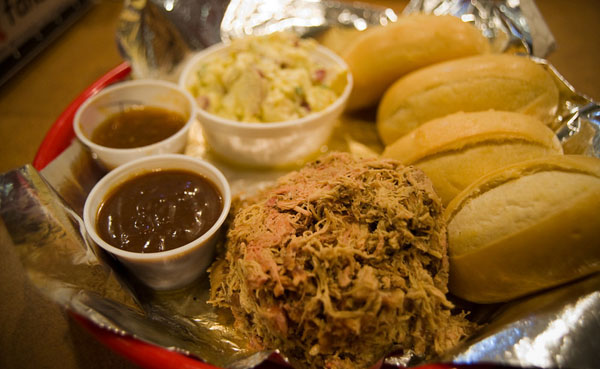
Look at where you’re dining: downtown Minneapolis or Eat Street (the 20s? or the 30s and 40s?), or Highland Park, or Uptown, or Bloomington, or Lowertown. Look at what you’re eating: corporate lunches, or diner breakfasts, or Hmong soul food, or burgers, or bratwurst, or imported cheese. It all reflects a pile of choices.
Sitting at home in South Minneapolis with a horrible cold waiting for a bike messenger carrying ramen and wearing a Hamm’s cap under his bike helmet is another choice.
3. “COMFORT”
Say “comfort food” to a random Minnesotan, and you may hear just about anything: Steak. Pho. Hamburgers. Stewed goat. Pizza. Apple pie. Tacos al pastor. Pulled pork sandwiches. Thanksgiving turkey.

Anything is a valid response. Anything is comfort food, if it takes you home. Were I to eat a last meal, and were I given 5 seconds to blurt out what that meal would consist of, it would be four — no five! — orders of shrimp tempura rolls from Wasabi restaurant in Madison.
It’s not that there aren’t better foods out there. (The foie gras- and brioche-stuffed roast chicken at Brasserie Zentral… oh, man. My mom’s lemon meringue pie. Sushi from Sushi of Gari in Manhattan… and so forth.) But those shrimp tempura rolls somehow taste like home in a way that nothing else does. Maybe it’s because they were the first thing I really fell in love with after stepping through that door into the wider world of food.
Unlike most shrimp tempura rolls, the ones from Wasabi don’t have any cucumber to get in the way. They always hit the table warm. The tempura is soft but crispy, the shrimp retains a bit of fresh snap. Surely no customer is intended to eat more than two orders’ worth, but I’ll have three if the situation warrants.
Ramen like the stuff served at United Noodles taps into that same vein. It’s something that you inhale, and then afterwards, you sigh. It’s not complicated, or at least it doesn’t feel complicated, which is what matters most.
4. DISENTANGLING THE GOOD FROM THE BELOVED
That first sushi I tried wasn’t particularly good. The Rocky Rococo’s pizza that I still eat from time to time isn’t good. The Wuollet chocolate long john that I eat on particularly difficult mornings isn’t bad, but it’s no YoYo Donuts or Mojo Monkey. But just because these things aren’t, technically speaking, the finest of their spectrum doesn’t mean that they can’t live in my heart.
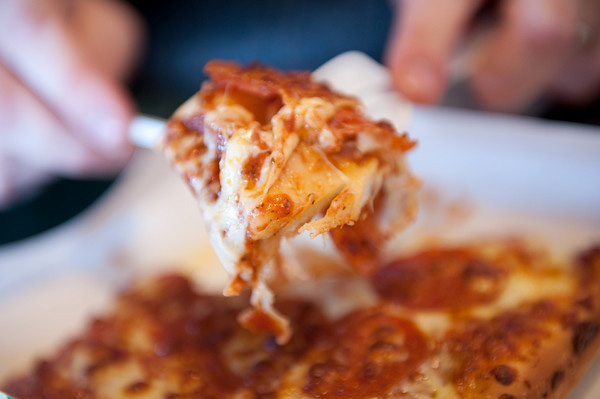
And just because they live in my heart doesn’t mean that I, as a food writer, should defend them as being brilliant when they’re not. If you’re going to write about food — or even talk about it seriously with other people who want to talk about it seriously — sort out the evidence you have from your suppositions from your personal tastes, and deal with each pile differently.
Any time I’m eating somewhere where the per-plate cost drifts north of $50, I try to remember Marcus Aurelius:
“Like seeing roasted meat and other dishes in front of you and suddenly realizing: This is a dead fish. A dead bird. A dead pig. Or that this noble vintage is grape juice, and the purple robes are sheep wool dyed with shellfish blood. Perceptions like that — latching onto things and piercing through them, so we see what they really are. That’s what we need to do all the time — all through our lives when things lay claim to our trust — to lay them bare and see how pointless they are, to strip away the legend that encrusts them.”
I try not to spend 100 percent of my time stripping away the legends that encrust stuff, but it’s a worthwhile pursuit when the tablecloth is white and the water is served “sparkling or still or tap.”
5. HEAVY TABLE’S MISSION
When we write about food at the Heavy Table, we do our best to keep our wires uncrossed. Which is to say: When we like something or dislike something, we try to figure out the why behind the what. Because it may be that the very thing that struck us as off, or “inauthentic” while for someone else is funky but perfect, or exactly how they do it in the little town that they happen to be from. One person’s “burnt” can be another’s “charmingly carbon-kissed.”
Our goal is always to start from the flavor and the texture of the food and spiral out from there. It’s great to know the story of the chef, and the restaurant, and the culture, and locality, and growing method, and the soil, but the place we try to start is the taste of what’s going to be in your mouth. And from there: We can go anywhere, but we’re armed with the basic and (as much as possible) the objective shared truth of the thing.
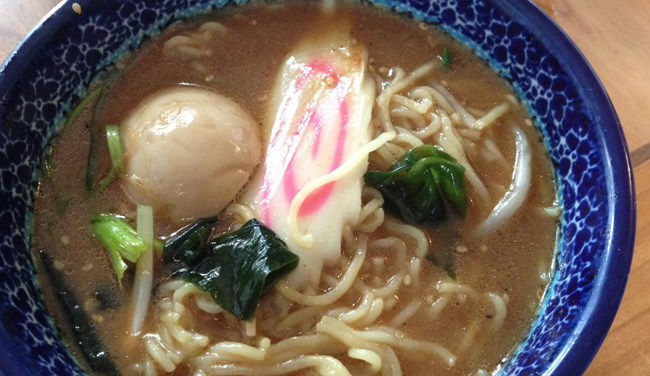
6. MISO RAMEN FROM THE UNITED NOODLES UNIDELI
$10 (plus $4 delivery charge, plus tax and tip) gets you a fairly generous bowl of chicken broth and a pile of stuff to put into it: noodles, one of those pink spiral fish cake things, some tender pork belly, bok choy, scallions, bean sprouts, half a hard-boiled shoyu egg. The broth arrives separately packaged from the rest of the ramen, which makes for a fresher tasting experience for the home user.
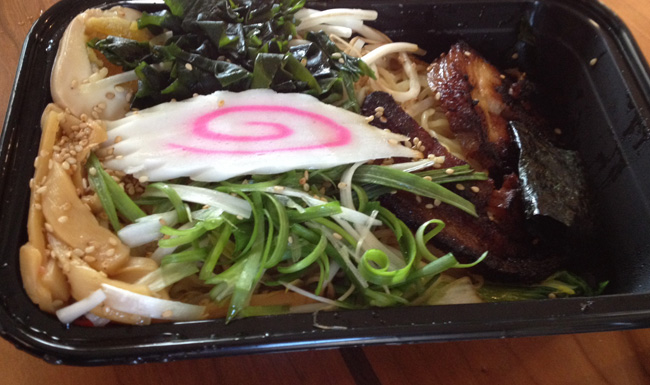
The broth is rich. Very rich. Whatever you may think of the noodles or other ramen-related helpers included in your purchase price (and an educated taster would find them decent to good, I think), the broth is liquid comfort, like drinking a roasted chicken. For me, the ramen was a trip overseas, but also a trip back home.
United Noodles bike-delivered ramen, 5-10pm Thursday-Sunday, 612.208.0123; limited delivery radius (Seward and Longfellow)
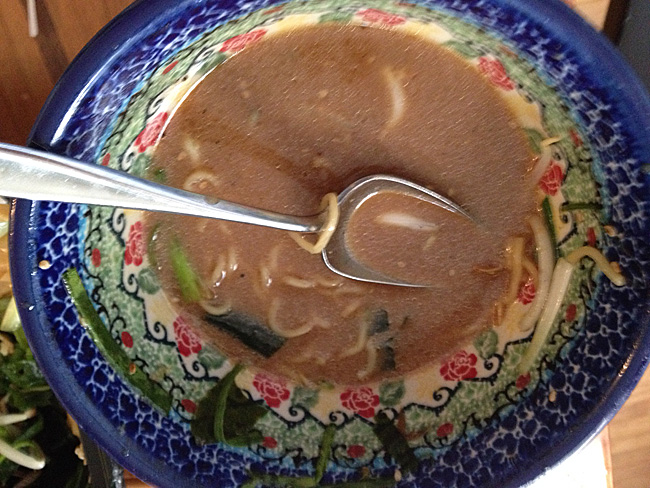

That drifted off a bit towards the end–attribute it to your head congestion–but was a thoroughly enjoyable and thought-provoking read. The Marcus Aurelius quotation is stunning, and perfectly illustrates why he is claimed by both epicures and stoics. I would not mind in the slightest seeing more such on the Heavy Table. Well done, sir.
Brett